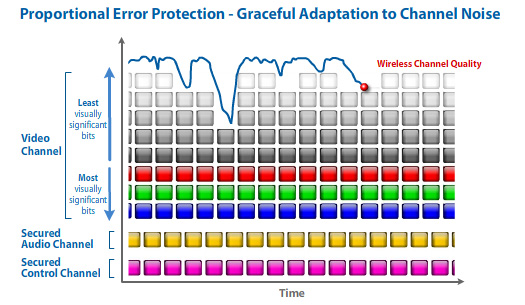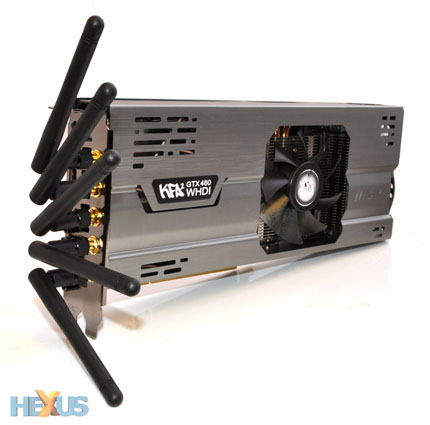Introduction
There's a growing number of wireless video-streaming solutions available, but they all tend to involve two external components - one plugged into the source, the second into the receiver.
If such a solution tickles your fancy for PC use, KFA2 has managed to eliminate at least half of the clutter with a GeForce graphics card featuring integrated WHDI (Wireless Home Digital Interface) technology.
Dubbed the KFA2 GeForce GTX 460 WHDI, it's effectively a 1GB GTX 460 graphics card with a WHDI transmitter baked right in - letting you wirelessly connect your PC to a HDTV up to 100 feet away.
Such functionality could be useful for a number of reasons, but while the likes of 3G and Wi-Fi bring indispensable wireless convenience to our portable gadgets, we've always been reluctant to rely on wire-free solutions for our high-def entertainment. Beaming uncompressed 1080p video from one room to another is no small feat, but the folks behind WHDI reckon it's capable of transmitting at a range of up to 100 feet - through walls, no less - with "practically no latency". So how do they do it?
What is WHDI?
The Wireless Home Digital Interface (WHDI) came into existence in 2009 and is developed by a consortium of big-name brands including AMIMON, Hitachi, LG, Motorola, Samsung, Sharp and Sony.
Designed to "change the way people use Audio/Video devices in the home", the wireless standard utilises the 5GHz frequency band to stream uncompressed video at data rates of up to 3Gbps in a 40MHz channel. That's a whole load of data to get through the air, but unlike previous solutions - which tended to opt for on-the-fly compression - WHDI works with raw uncompressed data and breaks it down into levels of importance for a more efficient use of channel capacity.
Using a video-modem technology invented by AMIMON, WHDI is able to analyse a data stream and determine which elements carry a greater visual importance. In contrast to 802.11n Wi-Fi, where all bits are treated equal, a WHDI stream grants most significant bits (MSBs) a greater share of channel resources, while less significant bits (LSBs) are allocated fewer resources and risk running into errors or being lost along the way.

Automatic Frequency Selection (AFS) is on hand to ensure WHDI dynamically switches to an unused channel in the case of interference with other 5GHz transmissions, AES 128-bit encryption is used to help protect your data from unwanted viewers, and the technology is HDCP 2.0 compliant to ensure compatibility with protected digital formats such as Blu-ray disc.
It's an efficient use of the frequency available, and the WHDI consortium reckons the human eye can tolerate the errors that fall on less important bits, resulting in high-quality, high-speed transmissions.
Clever stuff, and a number of manufacturers have already announced plans to ship TVs with integrated WHDI technology. All the signs suggest that it's time to cut the clutter and go wire-free, but how well does WHDI work in practise?










